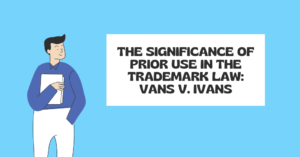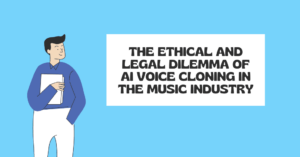Trademarks are invaluable assets for businesses, serving as identifiers of the source and quality of goods and services. However, in a global marketplace teeming with competition, counterfeiters and infringers are constantly looking for ways to exploit the reputation and success of established brands. One of their tactics is the use of deceptive similarity in trademarks, which poses significant challenges for trademark owners. This article explores the concept of deceptive similarity, its implications, and the measures businesses can take to safeguard their brand names or trademarks.
Understanding Deceptive Similarity
Deceptive similarity refers to the practice of creating trademarks that closely resemble existing, well-known trademarks. These counterfeits are created with the intention of fooling customers into thinking that they are purchasing goods or services from a reputable company when, in reality, this is not the case. This act of deception can lead to uncertainty among customers, a dilution of the originality of the original brand, a loss of sales, and damage to the reputation of the brand that is actually authentic. The use of trademarks that are deceptively designed is done with the intention of confusing the general public and of “free riding” on the reputation of the mark that is being copied.
The Elements of Deceptive Similarity
Several factors contribute to the determination of deceptive similarity between trademarks:
- Visual Similarity: The visual aspects of a trademark, including its shape, color, font, and overall design, play a crucial role in establishing deceptive similarity. If an infringing mark closely resembles the original in its visual representation, consumers may easily mistake it for the genuine product.
- Phonetic Similarity: The phonetic similarity between trademarks refers to how they sound when spoken aloud. Infringers often create brand names or slogans that mimic the pronunciation of well-known trademarks to exploit consumer confusion.
- Conceptual Similarity: This aspect focuses on the overall concept or idea conveyed by the trademark. Even if the visual or phonetic similarities are minimal, if the underlying concept is similar, it can still lead to confusion among consumers.
Take the example of a landmark case Starbucks Corporation v. Sardarbuksh Coffee & Co., Starbucks registered their word mark ‘STARBUCKS’ and associated logo as a trademark in India in 2001. The Defendants started their business in 2015 as ‘Sardarbuksh Coffee & Co.’ Sardarbuksh’s logo included a turban commander’s face with wavy lines on the sides and a circular black ribbon around it. Using the aforementioned instance, the Delhi High Court decided that a man of ordinary intelligence could be confused, and so it is deceptively similar. In this case, the defendant’s logo is visually, phonetically, and conceptually identical to the Plaintiff’s mark. (See image below.)
| STARBUCK LOGO | DEFENDANT’S LOGO |
Legal Implications and Section 11 of the Trademarks Act, 1999
When it comes to trademark law, the issue of deceptive similarity is of the utmost importance since it undermines the fundamental principles of brand protection and consumer trust. The Trademarks Act, 1999, in India, addresses this issue under Section 11. This section prohibits the registration of trademarks that are identical or deceptively similar to existing marks. It states that a mark shall not be registered if it is likely to cause confusion or deceive the public regarding the goods or services it represents.
Section 11 provides a legal basis for brand owners to prevent the registration and use of marks that bear deceptive similarity to their established trademarks. It gives businesses the ability to take legal action and seek remedies against possible infringers, allowing them to protect their brand’s integrity and reputation in the process.
Enforcement and Protection Strategies
To effectively combat deceptive similarity and protect their brands, businesses can adopt several proactive measures:
- Trademark Clearance Searches: Before adopting a new trademark, conducting comprehensive searches is crucial. This includes evaluating existing trademarks, pending applications, and common law usage to ensure that the proposed mark is distinct and does not bear deceptive similarity to others.
- Vigilant Monitoring: Regularly monitoring the marketplace for any potential infringements is vital. Businesses can employ specialized services, use search engines, monitor e-commerce platforms, and keep an eye on social media to identify and address any instances of deceptive similarity promptly.
- Trademark Registration: Registering trademarks provides a legal advantage by creating a public record of ownership. This registration acts as a deterrent against infringers and facilitates legal action if necessary.
- Enforcement Actions: If a business identifies a case of deceptive similarity, taking swift legal action against the infringer is crucial. This can involve sending cease-and-desist letters, filing oppositions or cancellations, and pursuing litigation to protect the brand’s integrity.
- Brand Awareness and Education: Educating consumers about the existence of counterfeit goods and the risks associated with deceptive similarity is vital. Through targeted campaigns, businesses can raise awareness, reinforce their brand’s distinctive elements, and foster consumer loyalty.
Conclusion
Deceptive similarity poses a significant threat to brand owners, undermining their hard-earned reputation, customer loyalty, and market position. By understanding the elements of deceptive similarity, leveraging the legal framework such as Section 11 of the Trademarks Act, 1999, and implementing robust enforcement and protection strategies, businesses can safeguard their brands and combat the proliferation of counterfeiters.










